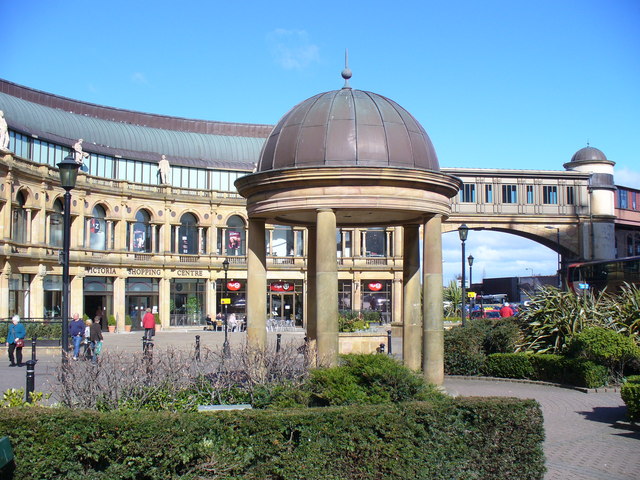Britain has a rich variety of spa towns – which became popular from the 17th century as the health benefits of local mineral waters were realised.
As drinking and bathing became fashionable, the towns developed additional facilities, and a tourism boom resulted.
Discover Towns profiles a number of towns that could provide a focus for a group visit.
Royal Tunbridge Wells
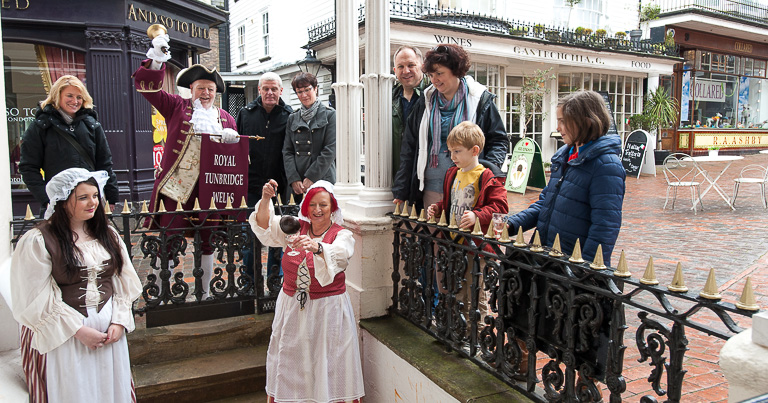
In the summer months, visitors can still sample the spring water, and have it served by a costumed Dipper.
The Chalybeate Spring gives Tunbridge Wells its name. Dudley Lord North, who noticed the reddish-brown waters foaming from the ground, discovered it was drinkable in 1606. North was returning to London after a stay at the Abergavenny Estate, and hoped to quench his hangover-thirst with the Spring water.
North declared it to be health-giving, and the news of its supposed exceptional properties circulated. Nobility from London and beyond began flocking to the Spring. Consequently a hamlet developed around it.
This resulted in the town’s being named Tunbridge Wells (it is close to Tonbridge, whose name was already taken as a town).
In the eighteenth century, the Chalybeate Spring developed its own ritual for noble visitors to ‘The Wells’. Each day, a tumbler of the spring water would be served by a ‘Dipper’. A small fee would be paid, not for the water, but for being served in a genteel fashion.
This tradition is still in practice. In the summer months, visitors can still sample the spring water, and have it served by a costumed Dipper. Indeed, interested parties can read more about a Dipper’s day, and about guided group tours.
Llandrindod Wells
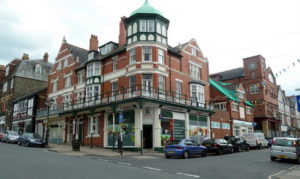
Llandrindod Wells c Andrew Hill
The wells of Llandrindod had been resorted to as early as 1696. Rock Water (the chalybeate spring) was rediscovered by a Mrs Jenkins in 1732, tenant of the lower Bach-y Graig Farm. She began selling the waters to travellers, and news of their ‘healing qualities’ spread.
In 1749, William Grosvenor converted a deserted farmhouse into a magnificent hotel, described as ‘accommodation for the invalid of whatever rank and distinction, field amusements for the healthy… balls, billiards and regular assemblies carried the pastimes of the gay and fashionable.’
The Hotel became fashionable, and for the following three decades flourished as a resort. However, as sea bathing grew in vogue, the Wells began to decline in the late 18thand early 19thcenturies.
The construction of the Heart of Wales Line (which made Llandrindodd accessible from the Midlands and North West of England, and South Wales) helped to reverse this decline. Enclosure of the common in 1862 resulted in expansion of the town, and it enjoyed a boom until 1914.
Bakewell, Derbyshire
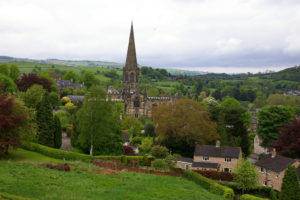
All Saint’s Parish Church, Bakewell
Bakewell is named after Badeca’s well – an Anglo-Saxon chieftain (Badecanwylia) and the town’s springs.
A chalybeate spring was discovered, and a bath house was built by the Duke of Rutland in 1697. The original 16x33ft bath is still in the cellar! In the 18thcentury there was a bid to develop Bakewell as a spa town, in the manner of Buxton.
However, the water’s temperature was problematic. At only 11 degrees Celsius it was less than half the temperature of the spring at Buxton!
Instead, Bakewell became an industrial town – heralded by the construction of the Lumford Mill, by Richard Arkwright in 1777. The Dukes of Devonshire and Rutland were hostile to industrial development, and refused water rights. Arkwright constructed dams and ponds to alter the course of the river, and although fined £10 per year for trespass, the mill went on to prosper.
There are lots of things to explore in Bakewell, new and old. The Old House Museum is in a building dating back to 1543, and every Monday is Market Day. Chatsworth Arts Festival is a yearly event, with a range of performances, music, film and talks.
Harrogate
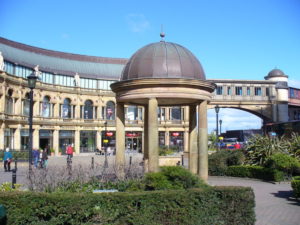
Victoria Shopping Centre – Colin Smith
Harrogate became known as ‘The English Spa’ in the Georgian era. Its waters were discovered in the 16th century, and in the 17th and 18th century the ‘healing’ properties of the chalybeate water brought a boom in wealthy, unwell visitors. The waters were the strongest sulphur waters in Europe.
Its development as a spa town was instigated by the enclosure of public lands in 1770. Whilst much of it was divided between private owners, 200 acres was reserved as a public common – The Stray. It was preserved in order that ‘that all persons whomsoever shall and may have access at times to the said springs, and be at liberty to use and drink the waters there arising, and take the benefit thereof…’
Isaac Shutt built The Royal Pump Room in 1842. It was designed to shelter wealthy visitors as they ‘took the water’. At its peak, it welcomed 15000 visitors each year, and one of its most high profile guests was Tsarina Alexandra of Russia (1911). Today, it is a museum, and visitors can explore Harrogate’s spa history.
Droitwich Spa
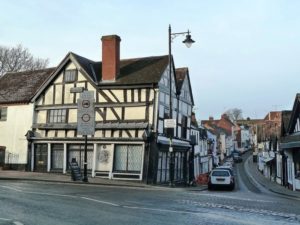
Droitwich Spa High Street C Mary and Angus Hogg
Droitwich Spa was referred to as ‘Saltwich’, according to Anglo-Saxon charters. It was changed to ‘Droitwich’ (‘droit’ means ‘right’ in French) in 1215, when the town was given its charter. ‘Spa’ was added in the 19th century, when the town’s spa facilities underwent development.
Droitwich Spa is located on huge deposits of salt, and salt has been extracted since ancient times. The brine springs flow from beds of pure rock salt 200ft below ground. The brine contains ten times more salt than standard seawater – rivalled only by the Dead Sea.
The town’s development into a spa town is largely through John Corbett, an MP and wealthy industrialist and philanthropist. He harnessed the modern methods of production instigated by the Industrial Revolution, and began building the Salt Works in 1854. They became the most successful in Europe, and he poured profits into regenerating Droitwich Spa.
By the end of his life in 1901 it was estimated that he owned or part-owned almost half the town.
Nowadays, visitors can go to Droitwich Spa Lido, one of the UK’s few remaining open-air saltwater swimming pools.
Matlock Bath
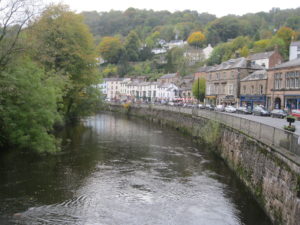
River Derwent C Andrew Bone
Matlock Bath’s warm springs were discovered in 1698. The waters were applied for medicinal purposes at first, and the first bath house was built in the same year – to attract visitors.
However, access to the village was difficult and it wasn’t until a bridge was built (over the Derwent in Matlock), and the opening of the southern side of the valley in 1783, that visitor traffic improved.
Matlock Bath became a popular resort in the nineteenth century. The Napoleonic Wars encouraged more homebound tourism, and this Derbyshire town was one of the beneficiaries for wealthy visitors. Princess Victoria of Kent’s royal visit in 1832 confirmed Matlock Bath’s status; and other famous visitors include John Ruskin and Lord Byron – with the latter comparing it to alpine Switzerland.
It remains a popular tourist destination to this day, due to its breathtaking natural beauty. Each autumn, the Matlock Bath Illuminations see the riverside decorated, and the cliffs floodlit with colour. Weekends see dedicated parades, in a modern celebration of the town’s heritage.
Ilkley, West Yorkshire
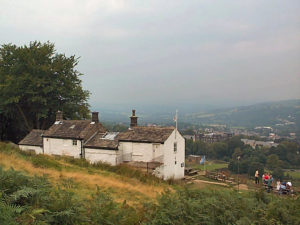
White Wells C David Spencer
In the seventeenth century White Wells Bath House was constructed close to a hillside spring. The water there gained a reputation for purity and softness. Early bathing processes involved ten minutes immersion into a plunge-bath (4 degrees Celsius) and a brisk rubdown by the health attendant.
Like many spa towns, Ilkley became a fashionable place in the nineteenth century. The opening of Ben Rhydding Hydro in 1844 was key in this.
Charles Darwin stayed in Ilkley in 1859 – the time when On the Origin of Specieswas first published. Darwin visited the Wells House Hydropathic Establishment, which opened in 1856. Darwin was essentially an outpatient, living in rented accommodation. He described resident physician Dr Edmund Smith as caring ‘very much for the fee and very little for the patient’! Nevertheless, tourists flocked to ‘take the waters’.
The Ben Rhydding Hydro fell into disuse after World War Two, and was demolished in the 1950’s. Wells House has been converted into luxury apartments. But White Wells House remains as a hydro building – and it can be visited on the edge of the moor.
Malvern, Worcestershire
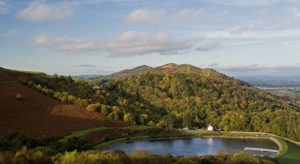
British Camp Reservoir, Malvern Hills C David Evans
According to local legend, the health-giving properties of Malvern water were known in medieval times, and there is a distinctive record of notable names extolling its virtues. The occulist Richard Banister wrote about the Eye Well (close to Holy Well) in a short poem in 1622. Further praise came from the botanist Benjamin Stillingfleet, the poet Thomas Warton and William Addison (physician of the Duchess of Kent).
Malvern water, then, had a strong reputation – and the bottling and shipping of its water increased. The leading exponents of hydrotherapy (Dr James Wilson and Dr James Manby Gully) erected clinics in the town – and it rapidly grew as a residential spa town. By 1865 over a quarter of the town’s 800 houses were hospitality venues.
Celebrated visitors included Catherine Dickens, Thomas Carlyle, Florence Nightingale and Lord Tennyson.
As the railways developed, Malvern became almost overwhelmed with visitors; often bringing 5,000 a day. Eventually, in 1865, a public meeting was called to denounce the rail fares – twice of other lines – as exploitative of the tourism industry.
As the popularity of hydrotherapy declined towards the end of the nineteenth century, many hotels were being converted into private boarding schools and rest homes. Following the town’s modernisation in the nineteenth century, the Malvern established itself as a centre of scientific research.
Tenbury Wells
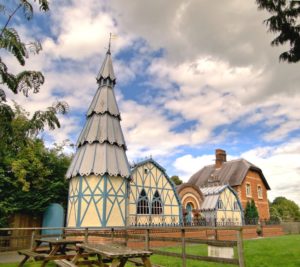
Tenbury Wells Pump Room C Philip Pankhurst
In 1839, a Dr Granville was traveling to Tenbury Wells, as he was conducting a survey to find seventy spa spots on the English landscape. Royal Leamington and Cheltenham were already ‘foremost towns’ for ‘taking the waters’. But Tenbury’s waters were found to be high in minerals, and deemed to be of medicinal value.
Due to the economic potential of developing spa towns, Granville’s findings generated interest in business terms. A spa facility was constructed under the stewardship of a Mr Hall (a London surgeon) in the 1850s, and the town upgraded its name to ‘Tenbury Wells’.
However, the spa was inefficient under Mr Hall, and it closed in 1855. Renewed attempts to bring it to life again manifested with the addition of pump rooms in 1862. But the vogue of the spa town had now passed, with seaside resorts replacing them.
The pump rooms is now a Grade II listed building, owned and managed by Tenbury Town Council. The Town Clerk’s office is located there, and Council Meetings are held in the main Assembly Room. They are also available for hire, and it is a registered venue for civil ceremonies.
Woodhall Spa, Lincolnshire
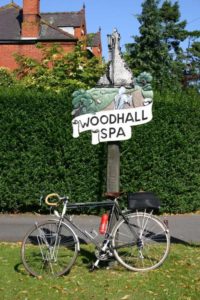
Woodhall Spa’s springs were discovered by accident. In the early nineteenth century, several entrepreneurs were unsuccessfully searching for coal in the area. After a Mr John Parkinson’s mine closed, water escaped the shaft – and it was found to have health benefits
The local Lord of the Manor (Thomas Hotchkin) then built a small bathhouse, a hotel and what was to become the complex named ‘Woodhall Spa Iodine Hotel’. The Hotchkin family maintained and modernised the facility from the 1830’s to the late 1880’s. The enterprise was then sold to a ‘Syndicate of Gentleman’ (including 3 MPs and a Lord Chief Justice), and Richard Adolphus Came (a London architect) was employed. He created an elegant and spacious community, with the Pinewoods and Spa Baths at its heart.
Woodhall Spa enjoyed an Edwardian heyday: although it became less fashionable after the First World War.
The Woodhall Spa Baths have been closed since the 1980’s, although a renovation project is underway.
Scarborough

Scarborough’s natural mineral waters were discovered in the seventeenth century, and it became a well-established place to ‘take the waters’.
Dicky Dickinson, an entrepeneur, built the first ‘spa house’ and two conveniences in about 1700. Dickinson maintained the facilities and collected subscriptions from its patrons (some of the subscription money paid the poor widows who dispensed water from the cistern).
Scarborough developed as a spa town throughout the following century, and it became one of Britain’s first seaside resorts. Elegant hotels and lodging houses became more heavily patronised, and in 1826 the Cliff Bridge Company was formed to erect an iron bridge across the valley.
Although the ‘taking of the waters’ declined in popularity, the Spa remained a fashionable place for entertainment. Outside of London, it featured the most popular music hall outside London.
The pump room finally closed in 1939.

